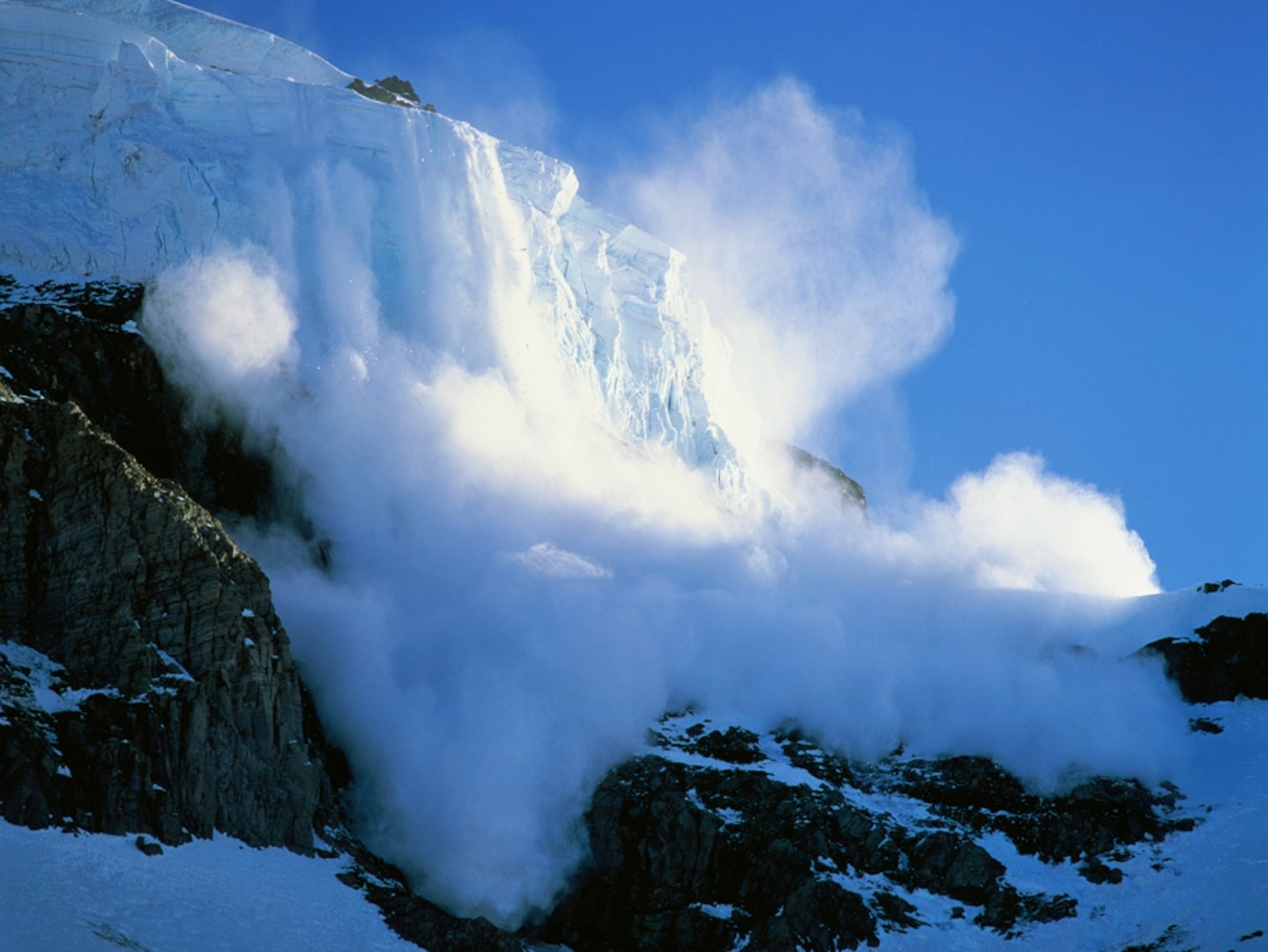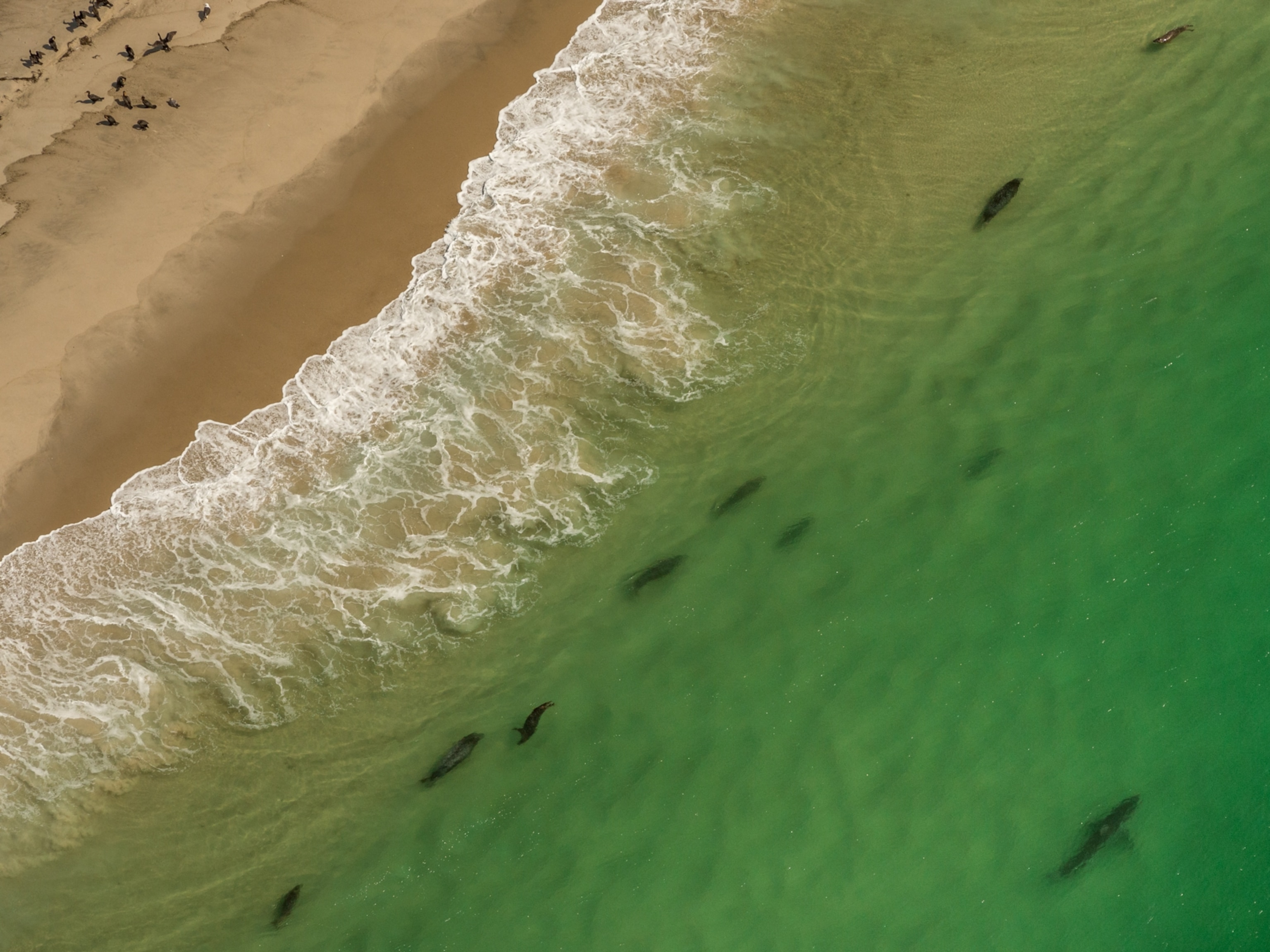
Avalanche safety tips and preparation
Learn the warning signs to evaluate avalanches, and what to do if you get caught in one.
Avalanches can occur without warning, sending thousands of tons of snow and ice racing downhill.
Every year, hundreds of people—usually skiers, snowboarders, or snowmobilers—get caught in avalanches. Although avalanches appear spontaneous and unpredictable, learning warning signs to evaluate risks can help avoid dangerous areas. Here we provide some key information to avoid these sliding masses of snow, plus actions to take if you, or someone you're with, gets caught in a snow slide.
Simon Trautman, an avalanche specialist at the Forest Service’s National Avalanche Center and Northwest Avalanche Center in Washington, said the most important thing when it comes to avalanche safety is to “get the forecast. Get the training. Get the gear.”
Having a healthy respect for the mountains and weather conditions at all times is critical.
Educate yourself on warning signs
Consider taking an avalanche education course if you spend time in the backcountry during snowy conditions. Learning clues to assess avalanche risk will help you recreate more safely in the winter.
- Know the red flags signaling an impending avalanche.
- Tread cautiously: Recent avalanches in an area likely indicate an unstable snow base.
- Be vigilant when moving through a landscape. Look up and around constantly to assess your risk of avalanches.
- Watch for cracking and collapsing snow, or bizarre noises emanating from the snow—these are clues that a snow layer might be unstable.
- Has it snowed recently? Fresh snow can make a layer unstable, and avalanches more likely.
- Avoid areas with wind-blown snow.
- Be aware of current and future weather conditions: Rain, strong sun, or warming temperatures increase avalanche risk.
Preparation
Before venturing into snowy wilderness areas, take the extra time to prepare for the conditions, by checking forecasts and acquiring safety gear.
- Before entering the backcountry, check online forecasts for the most updated danger levels in that area. The U.S. Forest Service supports 14 backcountry avalanche centers to provide daily avalanche forecasts.
- Check the weather during trip planning and immediately before departure.
- Take an avalanche course before venturing into the wilderness.
- Buddy system: Travel with others and communicate with each other about your observations to make informed decisions.
- Experts recommend three essential gear items for backcountry snow travel: an avalanche probe for locating a partner in the snow, a shovel for digging out, and an avalanche transceiver that can transmit and receive signals when buried under snow.
- Additional recommended gear includes an avalanche airbag, GPS for navigation (also accelerates rescue if you can provide GPS coordinates), and first aid kit.
- Wear the gear on your body in case you get separated from your sled or partner.
- Learn how to use the rescue equipment—it does nothing for you if you don’t know how to use it in a hurry.
- Make sure bindings for your skis or snowboard are releasable. Non-releasable bindings could trap you in a snow slide.
- Have an emergency plan already in place before setting out.
- Communicate your travel plan to others outside your group.
Things to avoid
Common mistakes can become deadly. Constant vigilance can help avoid some of these common errors.
- Don’t stop in an exposed area on a slope—your risk of getting caught in a fast-moving avalanche increases.
- Don’t get too separated from your group members so that you can’t hear or see each other.
- When in a group, avoid travelling immediately above a partner; doing so risks triggering an avalanche on the person lower on the slope.
- Don’t get so distracted by taking photos or videos that you lose sight of avalanche risks. On a scale of one to five, most fatalities occur when danger levels are two (moderate) and three (considerable).
What to do if you are caught in an avalanche
- Remain calm.
- Deploy your airbag—this helps you stay on top of the slide.
- Get off the snow slab. Aim 45 degrees down the slope and move across the flow of snow. Grab trees or branches to pull you out of the slide.
- Try to keep your head above the surface (most victims die from lack of oxygen).
- If stuck, swim with your feet downhill to see where you are going. Push an arm up as the slide slows, and create an air pocket around your face by clearing snow.
Rescue
- Traveling with a partner provides the best chance of rescue. Try to track your partner caught in a slide to narrow your search area.
- Call 911 (if possible).
- Evaluate the avalanche hazard before attempting a rescue.
- Turn your avalanche transceiver to receive to get incoming signals from a trapped member and use this tool to help you pinpoint an area for rescue.
- Use your avalanche probe at a 90-degree angle to the slope to locate a buried partner, and then start digging with your shovel.
- Be careful when digging to not stand on the snow pack over the buried partner, because that can eliminate their air pocket.
- Remember, time is critical: Chance of survival drops steeply after 18 minutes, to less than 30 percent.
Ultimately, having a healthy respect for the mountains and snowpack can be enough to keep people safe. “It doesn’t have to be doom and gloom, but it is serious. It shouldn’t be taken lightly,” Trautman said.
You May Also Like
Go Further
Animals
- This ‘saber-toothed’ salmon wasn’t quite what we thoughtThis ‘saber-toothed’ salmon wasn’t quite what we thought
- Why this rhino-zebra friendship makes perfect senseWhy this rhino-zebra friendship makes perfect sense
- When did bioluminescence evolve? It’s older than we thought.When did bioluminescence evolve? It’s older than we thought.
- Soy, skim … spider. Are any of these technically milk?Soy, skim … spider. Are any of these technically milk?
- This pristine piece of the Amazon shows nature’s resilienceThis pristine piece of the Amazon shows nature’s resilience
Environment
- This pristine piece of the Amazon shows nature’s resilienceThis pristine piece of the Amazon shows nature’s resilience
- Listen to 30 years of climate change transformed into haunting musicListen to 30 years of climate change transformed into haunting music
- This ancient society tried to stop El Niño—with child sacrificeThis ancient society tried to stop El Niño—with child sacrifice
- U.S. plans to clean its drinking water. What does that mean?U.S. plans to clean its drinking water. What does that mean?
History & Culture
- Meet the original members of the tortured poets departmentMeet the original members of the tortured poets department
- Séances at the White House? Why these first ladies turned to the occultSéances at the White House? Why these first ladies turned to the occult
- Gambling is everywhere now. When is that a problem?Gambling is everywhere now. When is that a problem?
- Beauty is pain—at least it was in 17th-century SpainBeauty is pain—at least it was in 17th-century Spain
- The real spies who inspired ‘The Ministry of Ungentlemanly Warfare’The real spies who inspired ‘The Ministry of Ungentlemanly Warfare’
Science
- Here's how astronomers found one of the rarest phenomenons in spaceHere's how astronomers found one of the rarest phenomenons in space
- Not an extrovert or introvert? There’s a word for that.Not an extrovert or introvert? There’s a word for that.
- NASA has a plan to clean up space junk—but is going green enough?NASA has a plan to clean up space junk—but is going green enough?
- Soy, skim … spider. Are any of these technically milk?Soy, skim … spider. Are any of these technically milk?
- Can aspirin help protect against colorectal cancers?Can aspirin help protect against colorectal cancers?
Travel
- What it's like to hike the Camino del Mayab in MexicoWhat it's like to hike the Camino del Mayab in Mexico
- Is this small English town Yorkshire's culinary capital?Is this small English town Yorkshire's culinary capital?
- This chef is taking Indian cuisine in a bold new directionThis chef is taking Indian cuisine in a bold new direction
- Follow in the footsteps of Robin Hood in Sherwood ForestFollow in the footsteps of Robin Hood in Sherwood Forest




